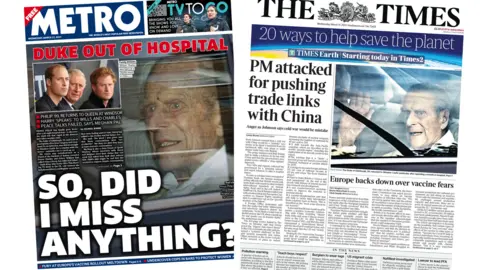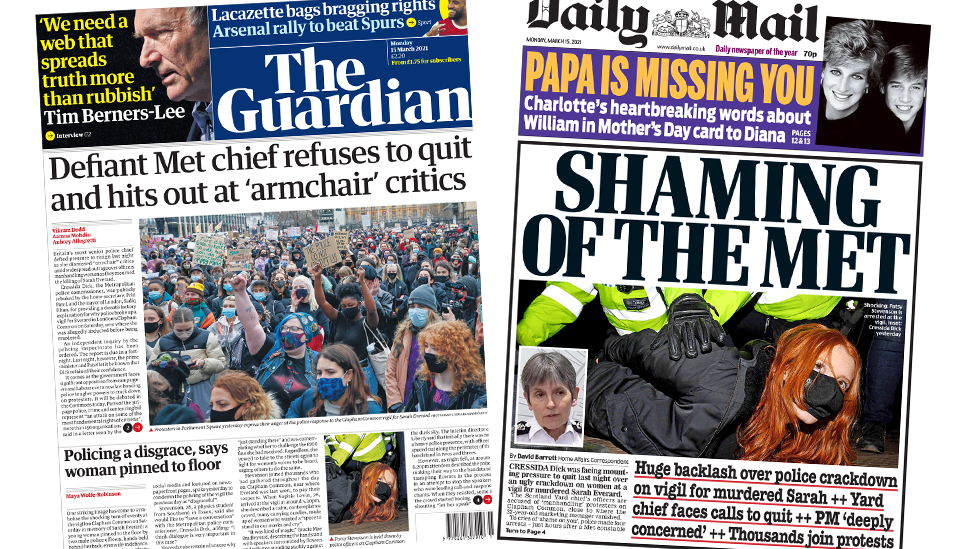Newspapers United Kingdom:Navigating the Digital
Introduction: The Changing Face of Newspapers United Kingdom
The landscape of Newspapers United Kingdom is undergoing a profound transformation, blending centuries-old journalistic traditions with rapid technological innovation. As we move through 2025, the industry faces both unprecedented challenges and remarkable opportunities. From the historic broadsheets that have shaped British political discourse for generations to the tabloids that dominate breakfast tables across the nation, Newspapers United Kingdom are reimagining their relationships with readers, revenue models, and very purpose in an increasingly digital society. This article examines the current state of British newspapers, exploring circulation trends, ownership patterns, digital adaptation strategies, and the emerging challenges that will define the future of journalism in the UK

The Traditional Print Landscape: Circulation and Ownership
The United Kingdom’s newspaper market has historically been divided between broadsheet “quality press” and tabloid “popular press,” though these distinctions have become increasingly blurred as most traditional broadsheets have transitioned to compact formats. According to recent data, twelve daily newspapers and eleven Sunday-only weekly newspapers are distributed nationally across the UK, with additional publications serving Scotland and smaller regions .
The print circulation landscape reveals interesting hierarchies. As of 2025, Metro leads in circulation with approximately 1,451,399 copies, leveraging its free distribution model to reach commuters across urban centers. The Sun follows with an estimated circulation exceeding 2.5 million, though exact figures are withheld due to data restrictions. The Daily Mail maintains a strong presence with over 2 million copies, while The Times and The Daily Telegraph report circulations of approximately 600,000 and 700,000 respectively
Table: Leading UK Newspapers by Estimated Print Circulation (2025)
| Newspaper | Circulation | Ownership | Format |
|---|---|---|---|
| Metro | 1,451,399 | DMGT | Freesheet |
| The Sun | 2,500,000+ | News UK | Tabloid |
| Daily Mail | 2,000,000+ | DMGT | Tabloid |
| The Times | 600,000+ | News UK | Compact |
| Daily Telegraph | 700,000+ | Telegraph Media Group | Broadsheet |
Three major companies—DMGT, News UK, and Reach—control approximately 90% of national circulation, creating significant market consolidation . This concentration of ownership has implications for editorial diversity and economic resilience in the face of industry challenges.
The Digital Transition: Online Presence and Audience Engagement
The digital revolution has fundamentally transformed how Newspapers United Kingdom operate and engage with readers. According to the 2025 Digital News Report, traditional news media is struggling to connect with much of the public, facing declining engagement, low trust, and stagnating digital subscriptions . Despite these challenges, UK news brands have developed substantial digital footprints.
Recent audience metrics reveal interesting trends. The Guardian leads commercial news brands with approximately 22.6 million monthly online visitors, closely followed by The Sun with 22.4 million. The Daily Express has shown remarkable growth, increasing its audience by 31% year-on-year to reach 18.5 million visitors . These figures demonstrate the substantial reach that Newspapers United Kingdom maintain in the digital space, even as they navigate the challenges of monetization.
The Reuters Institute report highlights broader industry trends, noting that “engagement with traditional media sources such as TV, print, and news websites continues to fall, while dependence on social media, video platforms, and online aggregators grows” . This shift has compelled newspapers to develop sophisticated multi-platform strategies that encompass websites, mobile apps, social media presence, and newsletter offerings.
Economic Realities: Revenue Models and Market Projections
The economic landscape for Newspapers United Kingdom is characterized by both challenges and innovation. According to market projections, revenue in the Newspapers & Magazines market is projected to reach US$5.14bn in 2025, with an expected annual growth rate (CAGR 2025-2030) of -2.63%, leading to a projected market volume of US$4.50bn by 2030 .
The Print Newspapers & Magazines segment remains significant, anticipated to have a market volume of US$3.58bn in 2025 . However, print revenue is projected to decline at a compound annual growth rate of -2.63% (2025–2030) as digital transition accelerates

Table: UK Newspaper Market Revenue Forecast (2025-2030)
| Year | Projected Revenue | Annual Growth Rate |
|---|---|---|
| 2025 | $5.14bn | -2.63% |
| 2026 | $5.00bn | -2.63% |
| 2027 | $4.87bn | -2.63% |
| 2028 | $4.74bn | -2.63% |
| 2029 | $4.62bn | -2.63% |
| 2030 | $4.50bn | -2.63% |
Diversified revenue streams have become essential for sustainability. Many Newspapers United Kingdom have implemented paywalls (The Times, The Telegraph), while others like The Independent operate freemium models that offer premium content for paying subscribers . Advertising remains important but has declined as a percentage of overall revenue, leading to increased experimentation with affiliate marketing, events, and premium content offerings.
Political Orientations and Editorial Stances
The political leanings of Newspapers United Kingdom have long played a significant role in shaping public discourse and political agendas. The traditional divides between left-leaning and right-leaning publications continue, though with interesting nuances in their 2024 general election endorsements.
The Daily Telegraph and The Sunday Telegraph maintain their right-wing conservative stance, explicitly supporting the Conservative Party in the 2024 election. The Sun, despite its right-wing orientation, surprisingly endorsed the Labour Party in the most recent election. The Guardian and The Observer maintain their centre-left positions with continued Labour support, while The Times has positioned itself as centre-right without official party endorsement
These political affiliations represent not just editorial preferences but also reflect the complex relationship between media, politics, and public opinion in the UK context. The 2025 Digital News Report notes that “populist politicians around the world are increasingly able to bypass traditional journalism in favour of friendly partisan media, ‘personalities,’ and ‘influencers'” , a trend that poses additional challenges to traditional newspaper political reporting.
Regional and Local Newspapers: Community Connection
Beyond the national titles, Newspapers United Kingdom include vibrant regional and local publications that serve distinct communities across the country. Most towns and cities in the UK have at least one local newspaper, such as the Evening Post in Bristol and The Echo in Cardiff . These publications face unique challenges, including resource constraints and competition from digital platforms, but remain vital sources of community information.
Qualitative research highlights how some local news providers are reinventing their approach. Michael MacLeod, founder of The Edinburgh Minute and The London Minute, argues that “Drive-by traffic in the millions is the antithesis of local news” and advocates for “respectful relationships” with readers rather than click-driven content . This philosophy has led to innovative approaches like community noticeboards that feature reader-contributed stories and events, fostering greater engagement and trust.
The Liverpool Echo’s editor, Maria Breslin, notes that 2024 was “the year regional brands such as the Liverpool Echo really found their voice again,” suggesting that local newspapers are rediscovering their advocacy role within communities . This renewed focus on community connection may prove essential for the survival of local journalism in the UK.
Innovation and Adaptation: Strategies for Future Relevance
Newspapers United Kingdom are employing various innovative strategies to maintain relevance and financial viability in a changing media landscape. These approaches include:
- AI Integration: News organizations are cautiously exploring artificial intelligence for content personalization, summarization, and distribution. Research shows audiences remain skeptical about AI in news, with concerns about transparency, accuracy, and trustworthiness . However, there is some enthusiasm for applications like story summarization (27%), translation (24%),and better recommendations (21%)
- Audio and Podcast Expansion: The rise of news podcasting represents a significant opportunity for reaching younger, better-educated audiences. The United States shows the highest podcast engagement (15% accessing news podcasts weekly), but UK publishers are increasingly investing in audio content
- Community Building: Rather than focusing solely on content creation, forward-thinking publishers are building communities around their brands. Mili Semlani of Splice Media argues that “journalism must leverage this splintering to regain audience trust and attention. We must evolve from content creators to relationship builders”
- Video Integration: As video continues to grow as a news source, newspapers are investing in video content and distribution through platforms like YouTube and TikTok. Across all markets, the proportion consuming social video has grown from 52% in 2020 to 65% in 2025
Challenges and Future Outlook
The future of Newspapers United Kingdom will be shaped by how they navigate several critical challenges:
- Platform Dependency: The changing algorithms and policies of social media platforms and search engines continue to impact traffic to news websites. Thomas Baekdal notes that “social traffic is likely to become even more unstable and will also likely continue to decline” .
- Trust and Credibility: Overall trust in news remains stable at 40% for the third consecutive year, but this is still four points lower than during the Coronavirus pandemic . Rebuilding trust remains a critical challenge
- Generational Transitions: Younger audiences have different consumption patterns and preferences, favoring visual and interactive content over traditional text-based journalism. TikTok is the fastest-growing social network for news, adding 4 percentage points across markets
- Economic Sustainability: With digital subscriptions stagnating at 18% across twenty richer countries, publishers must develop sustainable revenue models that reduce dependence on advertising
Despite these challenges, the enduring value of quality journalism provides grounds for cautious optimism. The 2025 Digital News Report notes that “in a world increasingly populated by synthetic content and misinformation, all generations still prize trusted brands with a track record for accuracy” .
Conclusion: The Resilient Future of Newspapers United Kingdom
The future of Newspapers United Kingdom will likely involve continued transformation rather than disappearance. While print circulation may decline, the brand authority and journalistic expertise of established news organizations position them to remain significant players in the information ecosystem. The successful newspapers of tomorrow will be those that balance technological innovation with journalistic values, developing sustainable business models while serving their democratic function.
As the industry continues to evolve, the essential role of newspapers in investigating power, informing citizens, and facilitating public discourse remains as vital as ever. The specific formats and business models may change, but the need for quality journalism in a functioning democracy ensures that Newspapers United Kingdom will continue to adapt and persist in new forms for the foreseeable future.

Additional Resources and Further Reading
For those interested in exploring more about Newspapers United Kingdom, the following external resources provide valuable information:
- List of newspapers in the United Kingdom – Comprehensive Wikipedia list of UK newspapers with circulation data and ownership information.
- Overview of the 2025 Digital News Report – Reuters Institute’s comprehensive analysis of global digital news trends.
- Press Gazette’s UK news website rankings – Monthly updated ranking of the most popular UK news websites.
- Statista Market Insights on UK Newspapers & Magazines – Statistical data and market projections for the UK newspaper industry.
- https://sjxsm.shop/digital-transformation-nhshealthcare-the-future/
- Journalism.co.uk predictions for journalism 2025 – Industry insights on future trends in journalism.
These resources offer additional data, analysis, and perspectives on the past, present, and future of Newspapers United Kingdom as they navigate the complex media landscape of the 21st century.

